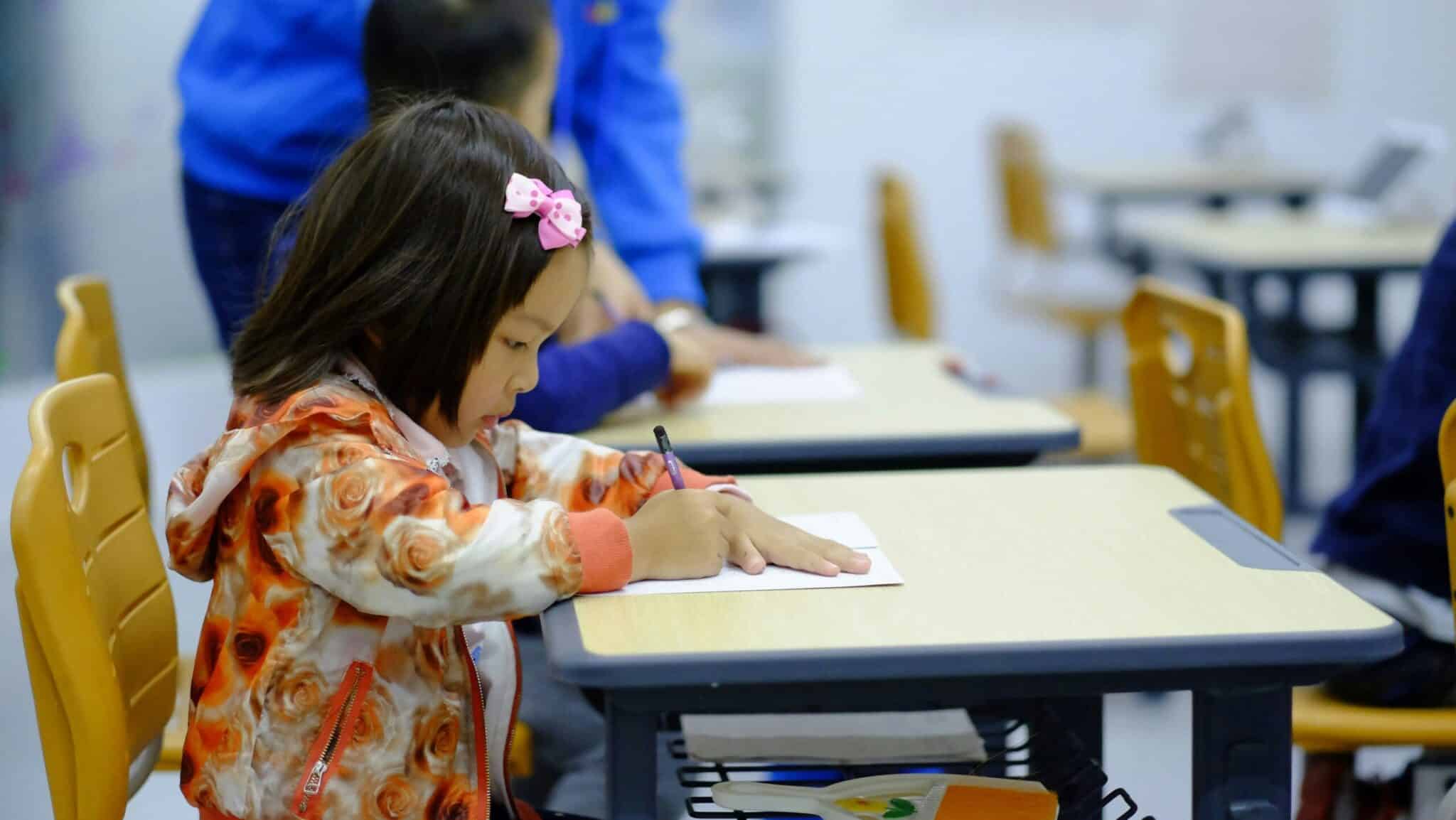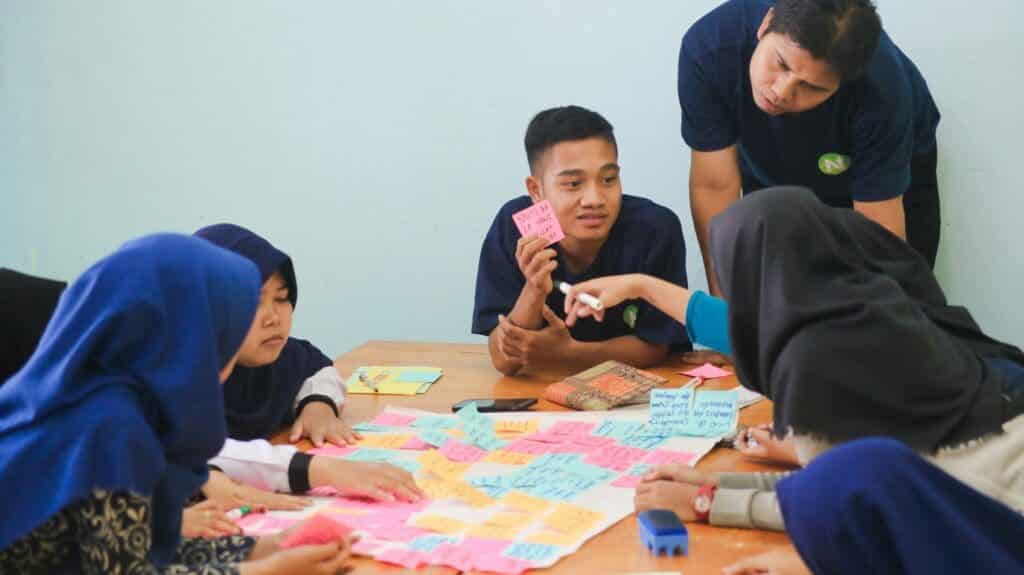Comprehending the Significance of a Constructive Learning Atmosphere

A positive learning environment is crucial for encouraging student involvement and enhancing academic success. Numerous research studies show that the classroom atmosphere plays a crucial role in influencing students’ motivation, engagement, and overall academic success. When educators foster a warm and inclusive atmosphere, it boosts students’ ability to share their thoughts freely, embrace intellectual challenges, and concentrate effectively on their studies. This constructive involvement is crucial for fostering understanding and fundamental social and emotional abilities.
Building trust and respect between students and teachers is essential for an effective learning space. When students feel safe and appreciated, they are more inclined to join in collaborative learning activities, take part in discussions, and express their thoughts. This environment of trust can alleviate the fear of failure, allowing students to explore subjects more comprehensively. Furthermore, it fosters a sense of belonging, enhancing connections among students, their peers, and the educational content.
Furthermore, a positive learning environment that fosters happiness can greatly influence student motivation. When students get praise instead of criticism, they are more inclined to embrace a development mentality. This mentality is essential for addressing obstacles and perceiving setbacks as chances for development and education. Educators are essential in this regard by providing constructive input and acknowledging accomplishments, regardless of their magnitude. When students feel their efforts are acknowledged and valued, they are more likely to participate actively in classroom interactions and activities.
Ultimately, fostering a positive learning environment is crucial for improving student engagement and performance. By emphasizing emotional safety, respect, and motivation, educators may cultivate a dynamic classroom that fosters academic success and supports the whole development of each student. By cultivating such an environment, educators profoundly affect students’ perceptions of learning and their ability to succeed in academic settings.
Establishing Rapport with Students

Developing robust teacher-student relationships is crucial for cultivating a positive learning environment. Rapport markedly improves communication, inspires pupils, and fosters a sense of belonging. Active listening is one of the most efficient methods for establishing rapport. When educators really listen to their students, it demonstrates respect for their perspectives and emotions, affirming their experiences and fostering engagement in conversations. This approach enhances connections and fosters a more inclusive environment.
A further effective method is to comprehend and create a positive learning environment that reflects the unique interests of kids. Educators may develop interest inventories or administer informal surveys to collect data on their students’ interests, passions, and ambitions. Integrating these passions into lessons enables instructors to enhance the relevance and engagement of learning. Utilizing popular culture or contemporary events that appeal to pupils may ignite passion and render classes more engaging.
Establishing an inviting classroom atmosphere is an essential component of fostering rapport. Elementary actions, such as showcasing students’ work or creating customized bulletin boards, may cultivate a feeling of ownership and pride in the educational environment. Implementing routines that encourage interaction, such as collaborative exercises or peer mentorship, fosters a sense of connection among students and their instructor. These tactics strengthen social connections and foster a more unified learning group.
Ultimately, offering regular encouragement and support is essential for fostering trust with pupils. Recognizing their endeavors, praising achievements, and providing constructive criticism cultivates resilience and dedication. When students perceive support, they are more inclined to engage actively in their education and embrace risks in their learning endeavors. This vital relationship eventually fosters a more affirmative and positive learning environment, in which every student feels esteemed and driven to excel.
Integrating Engaging and Interactive Educational Activities

Establishing a positive learning environment necessitates the deliberate integration of enjoyable and interactive activities that captivate students’ attention and improve comprehension. A successful approach is utilizing instructional games, which both entertain and reinforce essential topics. Customizing quiz contests or trivia games to match the topic matter allows students to review facts in an engaging manner. These activities cultivate a competitive spirit among peers, rendering learning both pleasurable and efficacious.
Group projects serve as an effective method to foster collaboration while enhancing vital abilities. Collaborative project work encourages students to exchange ideas and assume diverse roles. This method reinforces their understanding of the content and cultivates essential abilities such as communication, problem-solving, and leadership. We can structure projects around real-world issues to enhance engagement, providing students with significant settings for the application of their knowledge.
Practical experiences are essential for rendering learning fun and memorable. Activities such as scientific experiments, artistic projects, or excursions enable students to interact with the subject matter both physically and emotionally. Such experiences enhance comprehension and retention since students frequently connect with the topic on a more personal level. A biology lesson might include a field excursion to a nearby ecological location, allowing students to view ecosystems directly and therefore enhance their learning experience.
Incorporating engaging and interactive educational activities is crucial for fostering an appealing environment for pupils. By utilizing a diverse methodology encompassing games, collaborative projects, and experiential learning, educators may foster an environment conducive to student engagement and learning. This dynamic method attracts attention and promotes deeper engagement with the content, resulting in improved educational outcomes.
Establishing Explicit Expectations and Objectives

Setting explicit expectations and objectives in the classroom is a crucial approach to cultivating a more stimulating and effective learning atmosphere. When educators articulate specific objectives, it offers pupils a framework to comprehend expectations, enhancing their concentration on academic assignments. Explicit expectations function as guidance and encourage students to assume responsibility for their learning.
To establish expectations successfully, educators must initiate the formulation of classroom regulations that embody the principles of respect, accountability, and cooperation. At the start of the academic session, educators must introduce these principles and periodically review them to maintain uniformity. Involving students in the formulation of these norms enables educators to foster a feeling of community and accountability among learners, motivating them to comply with the established standards.
Moreover, formulating specified, measurable, attainable, relevant, and time-bound (SMART) objectives helps augment student accountability. SMART objectives offer a definitive framework for pupils to monitor their advancement and comprehend the standards for achievement. For example, instead of an ambiguous target like “improve in math,” a SMART goal might articulate, “increase the math test score by 15% by the conclusion of the semester.” This precision aids students in focusing on their academic aims and inspires them to pursue enhancement.
Consistently reviewing and discussing these expectations and objectives cultivates a reflective classroom environment, enabling students to evaluate their work and recognize areas for improvement. As educators uphold these principles, students may cultivate a heightened feeling of intrinsic drive and personal accountability for their academic pursuits. The classroom evolves into a more concentrated learning environment, where academic achievement is perceived as a shared objective, thereby enhancing both the pupils and the whole educational milieu.
Leveraging Technology to Augment Engagement

In the contemporary educational landscape, technology is important in fostering an engaging, positive environment for pupils. The use of technology tools not only promotes interactive learning but also augments students’ motivation and engagement. Educators can utilize several tools, including multimedia presentations, instructional applications, and online platforms, to enhance classroom engagement.
Multimedia presentations are among the most efficacious instruments for captivating students. Through the integration of films, presentations, and interactive components, educators may elucidate intricate ideas. Utilizing animations in a presentation may clarify complex subjects, rendering them more comprehensible and memorable for students. Furthermore, these presentations may accommodate diverse learning styles, enabling both visual and auditory learners to derive equal value from the presented knowledge.
Moreover, educational applications have transformed the manner in which students engage with learning resources. These applications frequently integrate gamification components, enhancing the enjoyment of learning and motivating students to actively participate with the content. Platforms such as Kahoot and Quizlet offer games, quizzes, and challenges that both evaluate knowledge and foster a positive learning environment. These technologies promote collaboration among students as they collectively address challenges or engage in amicable competitions.
Moreover, internet platforms provide unparalleled access to information and collaborative opportunities. For instance, platforms such as Google Classroom and Microsoft Teams enhance communication between educators and learners, allowing for immediate feedback and assistance. These systems enable instructors to exchange resources efficiently and provide a single repository for assignments and debates, improving the entire learning experience.
By judiciously incorporating technology into their pedagogical approaches, educators may cultivate an engaging and dynamic learning environment that enhances comprehension of the subject and equips students for a technology-oriented future. The utilization of contemporary tools facilitates a transition from passive information intake to active engagement and cooperation among students, which is crucial for optimal learning.
Promoting Student Agency and Autonomy

Integrating student voice and choice into the educational setting is crucial for enhancing engagement and cultivating a feeling of belonging among learners. When students see that their ideas are valued and that they are influencing their educational experience, they are more inclined to dedicate their time and effort to the learning process. This empowerment enhances confidence and fosters the development of critical thinking and decision-making abilities.
A potent way to promote student voice is to consistently seek feedback on lesson ideas, instructional methods, and classroom activities. Students can express their preferences and concerns through anonymous surveys, suggestion boxes, or open forums. Educators may subsequently evaluate this input to implement modifications that correspond with student preferences, ultimately resulting in more engaging and relevant lectures.
Furthermore, offering options in tasks can significantly augment student participation. Providing alternatives such as project forms, subjects, or group dynamics enables learners to assume responsibility for their work. For instance, when students are given the option to choose between a written report, a presentation, or a creative project to exhibit their comprehension of a subject, they are more inclined to go for a format that aligns with their abilities and interests.
Another method is incorporating student-led initiatives within the curriculum. Facilitating student collaboration on real-world issues or personal interests fosters a more significant learning experience. This technique enhances motivation while fostering collaboration and peer learning since students often interact with their peers’ distinct viewpoints.
When educators integrate student voice and choice into their teaching practices, they cultivate an engaging and adaptive learning environment. This strategy improves the educational experience for learners and provides them with essential skills for their future endeavors.
Cultivating a Growth Mindset

Fostering a development attitude is crucial for establishing an engaging educational atmosphere in the classroom. A growth mindset posits that skills and intellect may be cultivated through commitment and effort. By cultivating this mindset in kids, educators may promote a culture that values work, perseverance, and a constructive approach toward problems. This technique boosts students’ motivation and fosters a more vibrant, positive environment.
An excellent method for fostering a development mindset is to underscore the significance of work rather than inherent aptitude. Educators can do this by commending pupils for their diligence, perseverance, and commitment rather than just their accomplishments. When students see that effort results in enhancement, they are more inclined to accept difficulties and perceive failures as chances for development. This change in viewpoint can markedly diminish the apprehension of failure, enabling pupils to embrace chances in their education. Such an approach cultivates resilience and motivates people to pursue new challenges instead of evading unpleasant jobs.
Another crucial element in cultivating a development attitude is instructing kids to accept constructive criticism. Students should be encouraged to regard feedback as a mechanism for improvement rather than as criticism. Educators may cultivate an atmosphere characterized by regular and constructive feedback, fostering a learning culture in which students feel secure to inquire, request assistance, and participate in substantive conversations regarding their advancement. Through the normalization of reflection and self-assessment, students come to recognize the significance of feedback in their educational pursuits.
Ultimately, fostering a development attitude among kids results in a more dynamic and driven classroom environment. When students possess confidence in their capacity for improvement and embrace difficulties, they exhibit more engagement in learning, resulting in enhanced academic achievement and personal growth.
Establishing a Secure and Inclusive Learning Environment

Creating a secure and inclusive classroom atmosphere is crucial for promoting excellent learning experiences. In this environment, every student feels esteemed, acknowledged, and empowered to engage fully. A classroom that fosters safety and inclusion boosts student engagement and accommodates varied learning requirements, which is essential in today’s multicultural society.
The foundation of fostering an inclusive workplace is in the cultivation of respect and empathy between educators and learners. Educators ought to exemplify respectful conduct by attentively listening to their pupils and acknowledging their perspectives. Fostering open discourse may cultivate a culture of trust, allowing students to articulate their thoughts without apprehension of judgment. Fostering empathy in students is crucial; integrating activities that encourage perspective-taking can enhance their understanding and appreciation of their peers’ backgrounds and experiences.
Diversity ought to be embraced in the classroom. Educators can utilize diverse instructional resources that represent many cultural origins and viewpoints, ensuring all students see themselves reflected. This goal may be achieved through a variety of books, multimedia materials, and collaborative initiatives that facilitate varied perspectives. Furthermore, educators must be attentive to any instances of prejudice or bullying that may arise. Defining explicit expectations and repercussions can facilitate the preservation of a respectful atmosphere.
Furthermore, comprehending the specific demands of particular learners helps augment safety and inclusion. Facilitating various learning styles and offering essential supports—such as differentiated teaching or employing assistive technologies—can foster an inclusive learning environment for everyone. Consistently soliciting input from students about their educational experiences can yield significant insights for ongoing enhancement.
In conclusion, establishing a secure and inclusive classroom is essential for optimal learning. By emphasizing respect, sensitivity, and diversity, educators can guarantee that all children feel esteemed and supported in their academic pursuits.
Collecting Feedback and Pursuing Continuous Improvement

Collecting input from students is essential for fostering an engaging educational atmosphere. Comprehending students’ viewpoints and experiences can markedly improve the teaching process. By actively seeking feedback on diverse elements of the classroom—from pedagogical approaches to classroom interactions—educators may pinpoint areas for enhancement and modify their techniques accordingly. This technique cultivates a responsive learning environment and promotes student engagement in their education.
We can utilize diverse methodologies to proficiently evaluate student contentment and involvement. Surveys and questionnaires are prevalent instruments for gathering direct, quantitative data. We can develop these tools to gauge students’ views on the relevance of the course, the pedagogical approach, and the overall classroom environment. Digital platforms enhance the dissemination of these forms and promote anonymity, potentially resulting in more candid comments. Moreover, employing exit tickets at the conclusion of a class session facilitates instant reflections on certain courses, offering educators real-time information.
Furthermore, participating in frequent informal chats might produce qualitative data that numerical statistics may not encompass. Such conversations may include informal discussions with students during class activities or focused feedback sessions that enable students to articulate their opinions openly. By employing several feedback collection methods, educators may gain a thorough understanding of student engagement and satisfaction levels.
A crucial element of this feedback process is the readiness of educators to contemplate the insights provided and modify their teaching methodologies accordingly. By incorporating student feedback, instructors exhibit their dedication to ongoing enhancement, thereby reinforcing the positive environment. Actively soliciting and employing student input enhances classroom dynamics and substantially increases the efficacy of instructional tactics.



Pingback: Professor in College:How to Know if You Have a Good Professor
Pingback: Mastering Focus: The Importance of Focus in Education